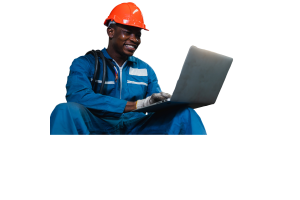SV vs CTD
Why Your Sound Speed Measurement Method Matters
By: Jehan Zouak, Marketing Manager & Chris Bueley, VP of Projects & Services - AML Oceanographic
It’s an age old question (Okay, maybe not that old): Should I collect sound speed data for my hydrographic survey with a CTD or a Sound Velocity (SV) profiler? What’s the difference?
How does a CTD profiler measure sound velocity?
EMPIRICALLY DERIVED FORMULA
An empirically derived formula is created from correlations observed in data rather than from proven theoretical derivations.
How does a SV profiler measure sound velocity?
FIRST PRINCIPLES
First principles are theories supported by established science. Associations are made through derivations rather than assumptions made through observations as they are in empirically derived formulas.
Here’s how you’d determine speed on a morning run:
And here’s how you’d measure sound speed using the same principles on a TOF sensor:

You’ll notice that the only value being measured is time; not conductivity, not temperature, not pressure. The sensor relies on first principles rather than an empirically derived formula. For this reason, TOF sensors are fluid agnostic – they work in any liquid be it orange juice, tomato soup, or vodka (Yes, we’ve tried this).
Which is more accurate?
CTD-derived sound speed measurements have four primary sources of error. The individual measurements of conductivity, temperature, and pressure (depth) each have respective error margins. Those inaccuracies, combined with the limitations of the empirically derived formulas used to calculate sound speed from CTD data, result in a generally agreed upon accuracy limitation of 0.25 m/s. In addition to having their own accuracy specifications, each parameter has a different response time which can further exacerbate the issue.

TYPICAL CTD ERROR MARGINS
A: Conductivity measurement = 0.003 mS/cm
B: Temperature measurement = 0.005 °C
C: Pressure measurement = 0.05 %FS
D: CT&P conversion to Salinity = 0.01 ppt
E: CTD-derived Sound Velocity accuracy = 0.25 m/s
Sound velocity sensors measure directly, rather than an amalgamation of different measurements. If you remember from the previous section, sound velocity sensors use a basic distance/time relation to calculate speed. This relation assumes of course, that total distance is known.
It should be noted that the total path length of a given sensor is not known at the time of manufacture. For a sensor to produce accurate results, the path length must be known to an extremely high accuracy; an accuracy which cannot be achieved by direct ruler measurement. To put this into context, a path length measurement error on the order of half the width of a human hair would yield a sound velocity measurement error well beyond the sensor’s accuracy specification.

Ruler measurement won't cut it when tolerance
is less than half the width of a human hair.
It's all about the calibration.
The path length of a given sensor is determined during its calibration process. Calibration is done by submerging the sensor in a fluid in which sound speed is known to a very high accuracy, referred to as a reference fluid. In our case, the reference fluid is distilled water. We use distilled water because the relationship between sound speed and temperature is described to a very high accuracy by the work of Bilaniuk and Wong2. With baths of distilled water at a known pressure, sound velocity can easily be calculated as a function of temperature. With this process, we back-calculate the path length. This provides the unique path length for each sensor which is then programmed into the sensor’s memory.
The accuracy of modern time-of-flight sound velocity sensors is limited largely by the available reference fluids. The best equation to date yields an SV reference accuracy of 0.02 m/s2. As it is not possible for a sensor to have an absolute accuracy that exceeds (or even exactly meets) its reference standard, sound velocity sensors have a generally accepted accuracy of 0.025 m/s. This accuracy specification encompasses the reference fluid’s accuracy limitation plus a bit of ‘wiggle room.’
MEASURING FLIGHT TIME
As the method’s name implies, the time it takes an acoustic pulse to travel over a fixed path length – the flight time – is a key element of time-of-flight sound velocity. Time is measured in nanoseconds to achieve the required precision.
How does the sensor measure time with such precision?
The timing technology behind modern sound velocity sensors is adopted from GPS applications. As would be required for any technology launched into space and expected to provide accurate data for years, the timing technology is extremely precise and stable.
Contrary to popular belief among some CTD manufacturers, CTDs are not used as reference standards during the calibration of sound velocity sensors. Why? Simply put, they aren’t good enough. Why would you use a reference that can only provide accuracy to 0.25 m/s when there is a reference that is ten times more accurate? What is accuracy anyway?
So, which should I use?
For hydrographic surveying, TOF sound speed sensors are the way to go. Beam steering and refraction correction demand highly accurate sound velocity. CTDs can’t compete with the direct measurement of TOF SV for accurate sound speed measurement.

Sound speed profiles obtained with a CTD can result in significant errors. TOF sensors can provide a more accurate picture of the water column, providing better multibeam data.
Learn how MVP can make a difference for you.
AML’s Moving Vessel Profiler is proven to remove both the technical and financial unpredictability associated with survey operations. With over 130 systems sold, MVP is the market leader in underway profiling systems, and is backed by 20 years of experience and thousands of successful surveys.













